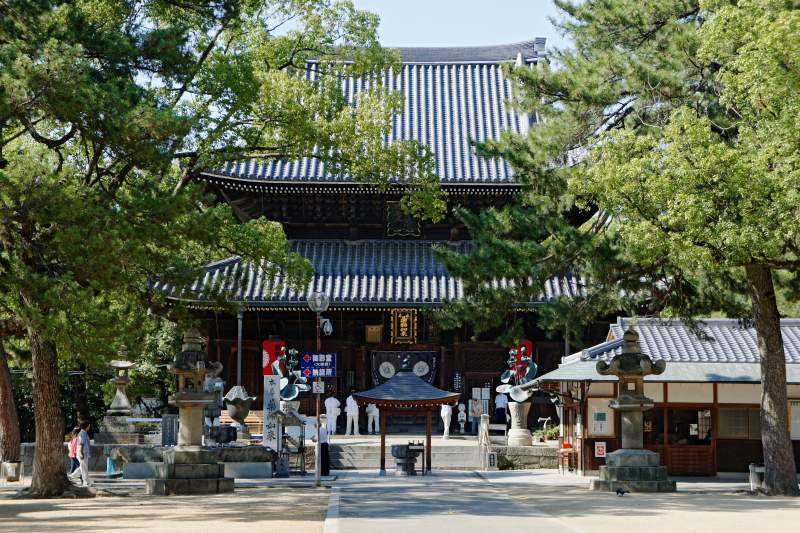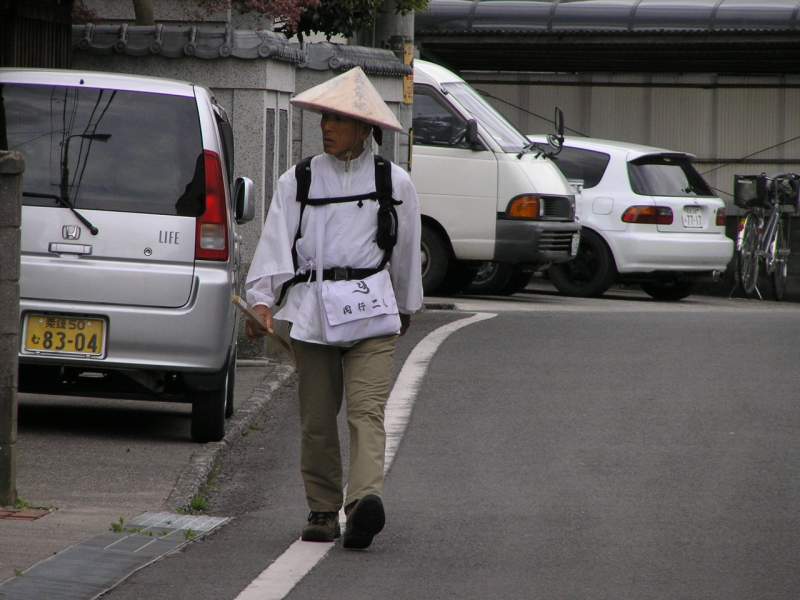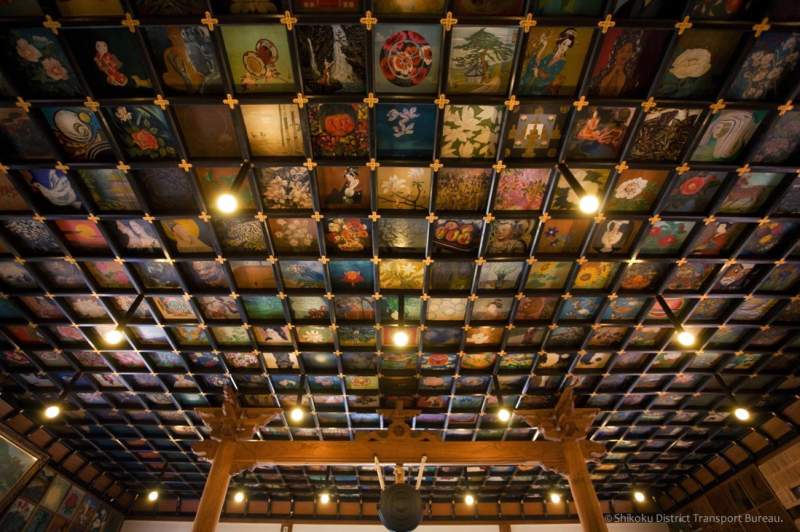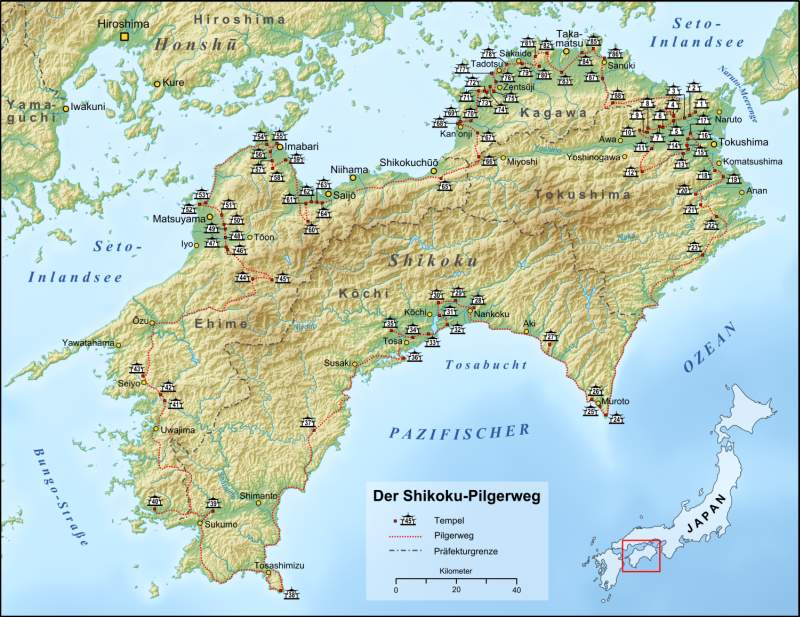Hike the 1,200 year old Shikoku pilgrimage trail of 88 temples
The Shikoku Pilgrimage is a travel to 88 temples associated with the Buddhist monk Kūkai on the island of Shikoku, Japan. With a long history of over 1,200 years, large numbers of pilgrims (known as henro) still undertake the journey for a variety of ascetic, pious, and tourism-related purposes. The pilgrimage is traditionally completed on foot, but modern pilgrims use cars, taxis, buses, bicycles, or motorcycles. The standard walking course is approximately 1,200 kilometers (750 mi) and can take anywhere from 30 to 60 days to complete.
Some of the temples are tucked away in rice fields, others are along busy roads, while others on mountaintops and near oceans.
Watch the above video and take a virtual trip of the pilgrimage. Superbly done video and editing from Studio Red Dot.
Great Priest Kukai
Kukai ( posthumously known as Kobo Daishi ) was a renowned monk who established the Shingon ( Esoteric ) school of Buddhism in Japan during the early Heian era ( 794-1185 ). Kukai was born in Zentsu-ji (temple #75 on the pilgrimage) in present-day Kagawa Prefecture, Shikoku. At the age of 15 he moved to the capital to study, where he came under the influence of a Buddhist priest. He returned to Shikoku to pursue a severe, ascetic form of Buddhism among the mountains. He is said to have attained enlightenment at a cave located in Muroto, Kochi Prefecture. At the age of 31 he went to China where he mastered Esoteric Buddhism from its preeminent master, Hui-guo. After returning to Japan, he spread the beliefs of Shingon Buddhism and spent much time in meditation before he died at the age of 62. Some believe that Kukai did not die, but is in a higher level of meditation.
Zentsu-ji temple #75 and the birthplace of Kukai

By 663highland CC BY 2.5
Henro / Pilgrim
An aruki-henro or walking pilgrim‘s traditional costume is comprised of a distinctive sedge hat (conical Asian hat), a white shirt, and kongō-zue. The henro also carries a bag that contains name slips, prayer beads, incense sticks, and coins used for offerings. More religious minded may also have with them a book of sutras and go-eika set with a bell.

Iwamotoji temple #37
There are 575 individual paintings on the ceiling of this temple. The pictures displayed are chosen through a nation-wide competition and exhibit a wide variety of subjects, ranging from Buddhist saints, legendary animals, pets and even Marilyn Monroe.

Image: Shikoku District Transport Bureau
Comprehensive information on the Shikoku pilgrimage and to help you plan your hike can be found on the Shikoku District Transport Bureau website.
Map of the 88 temples along the Shikoku Pilgrimage

Image: By Lencer – own work
Feature Image: Simon Desmarals (CC BY-SA 2.0) modified